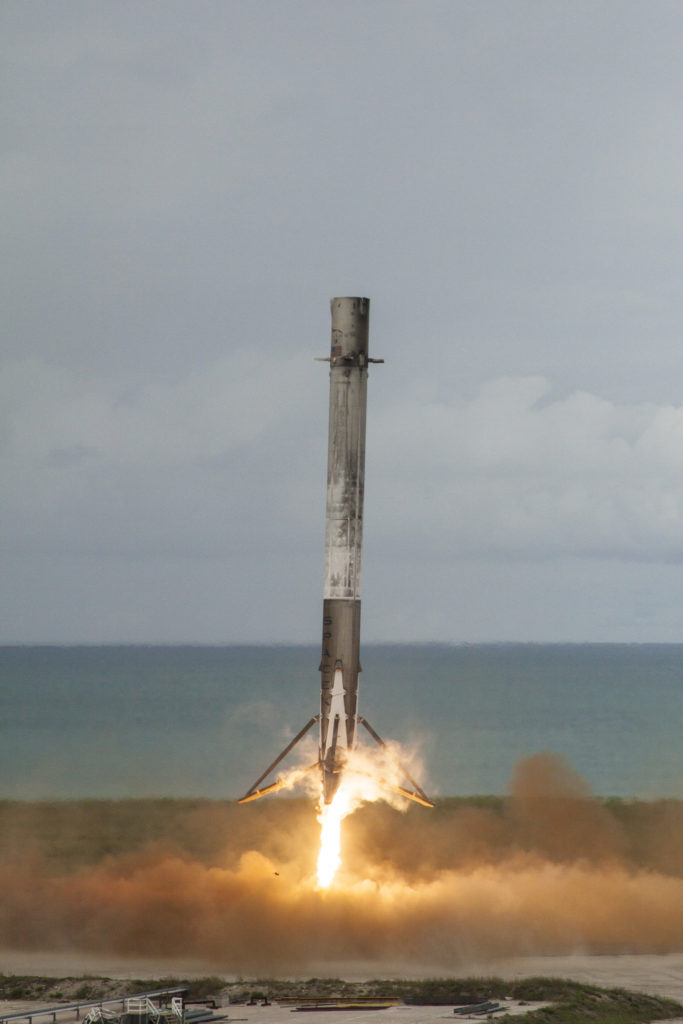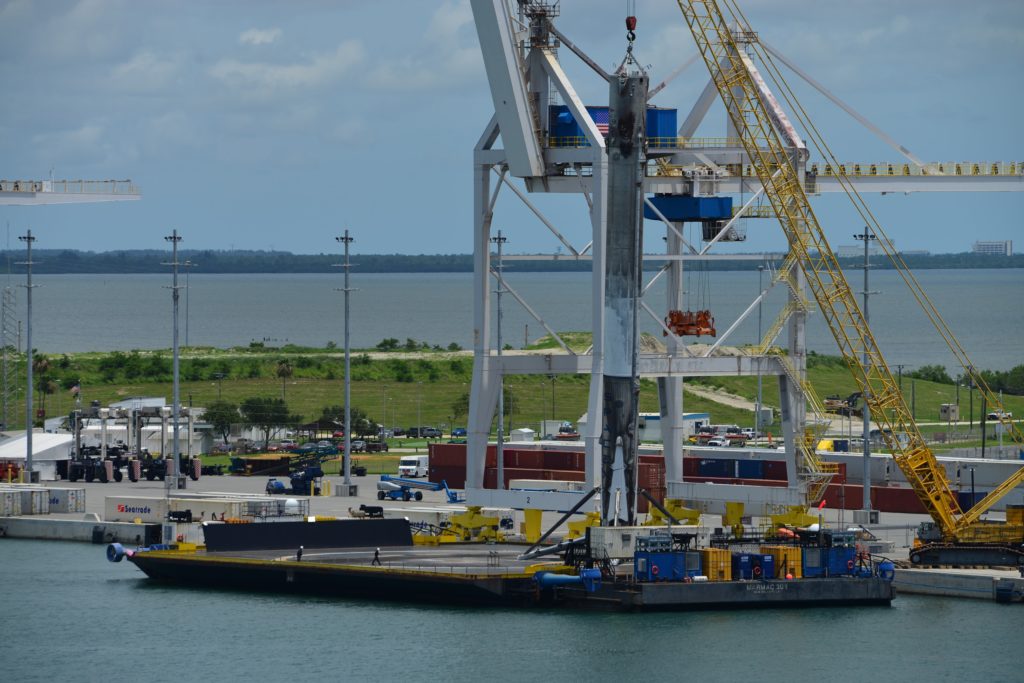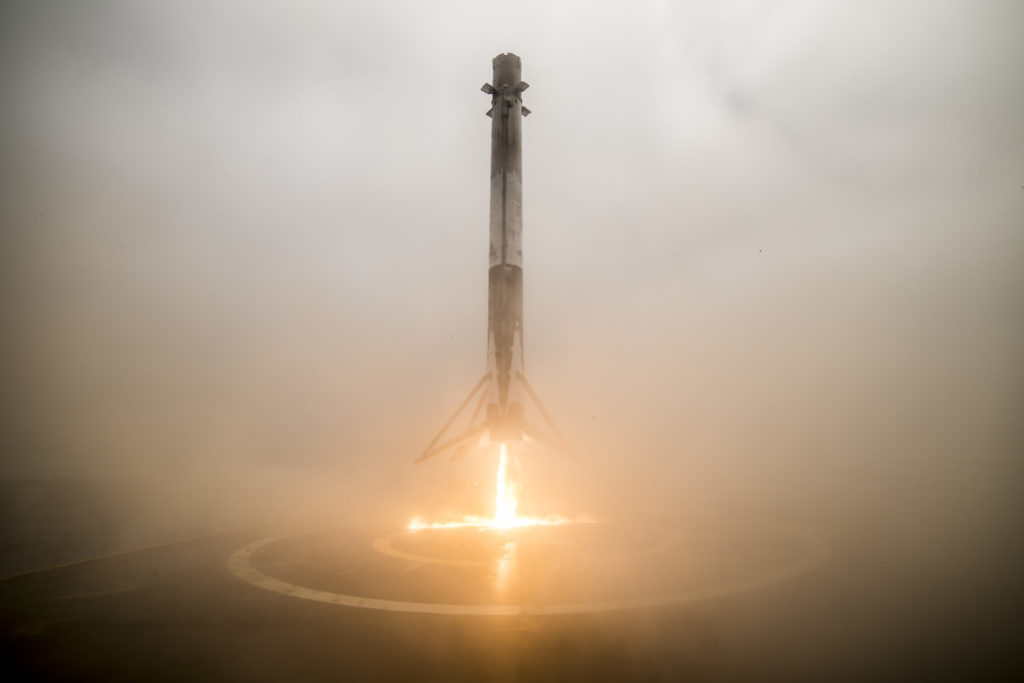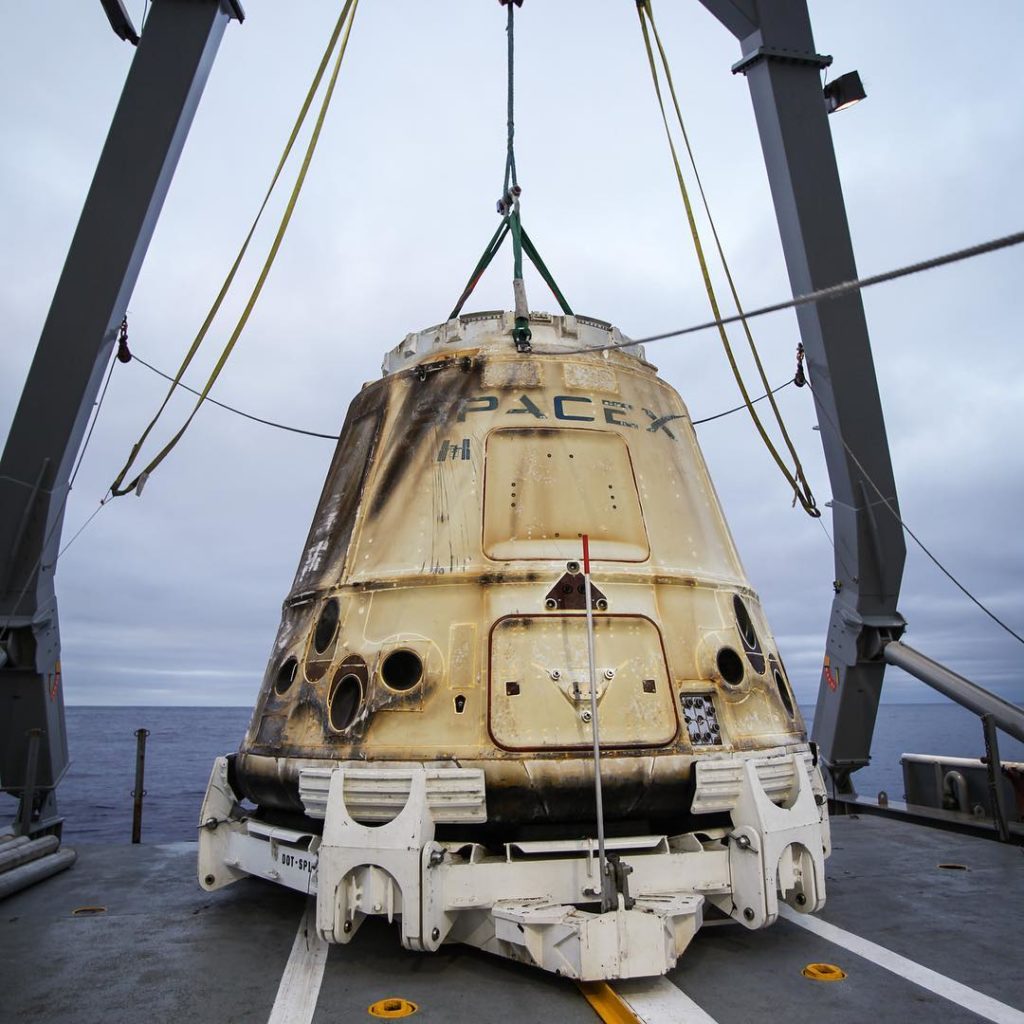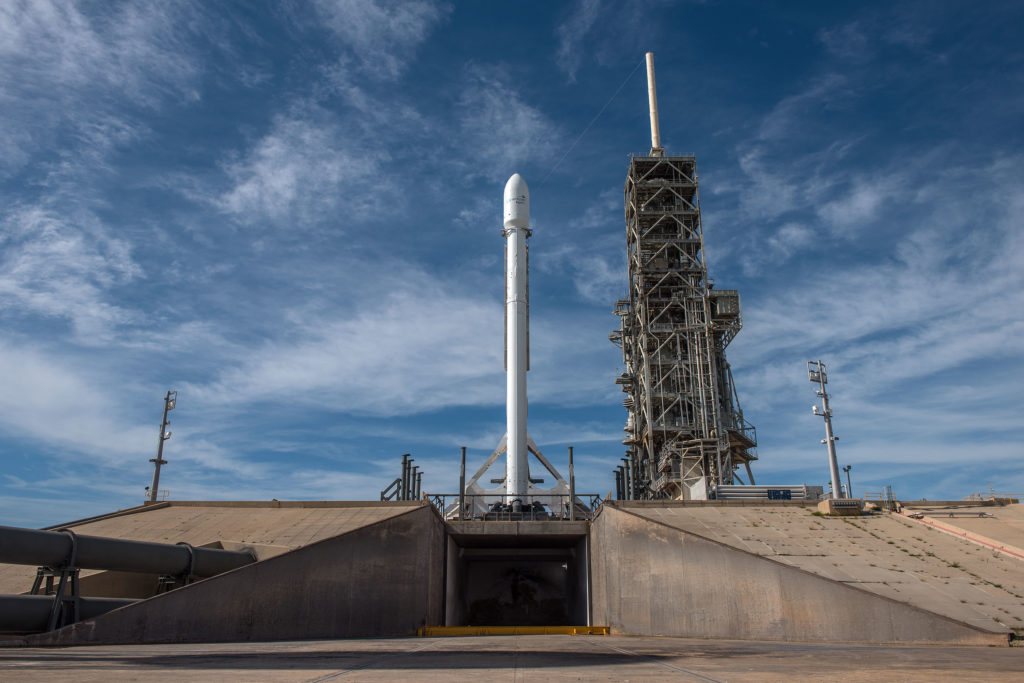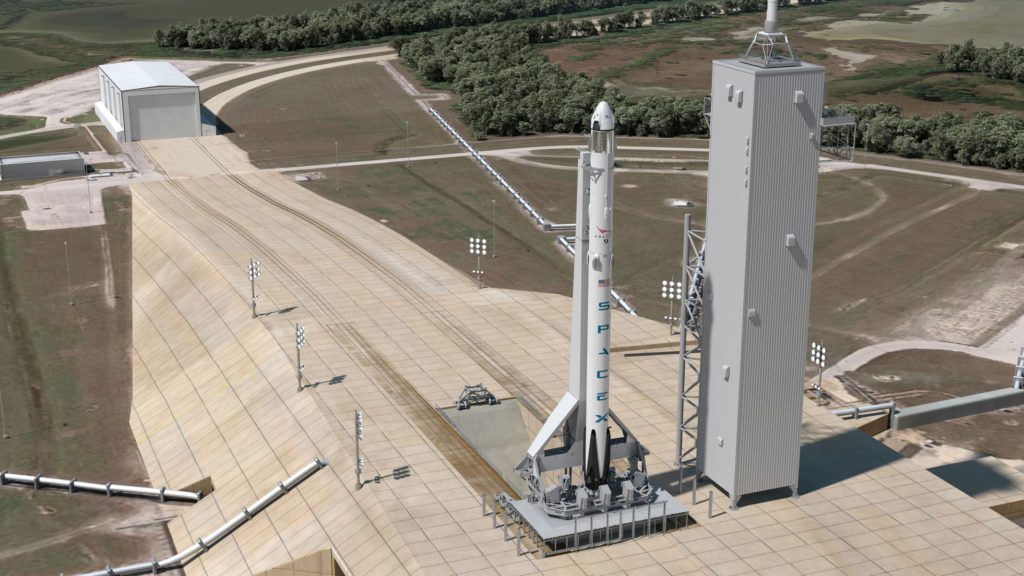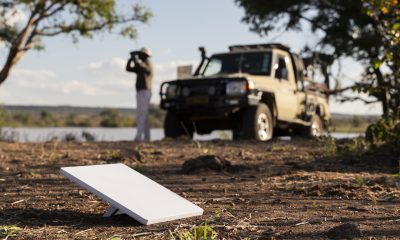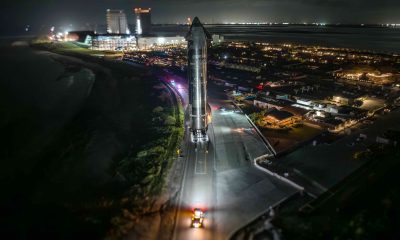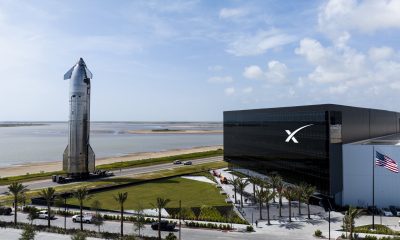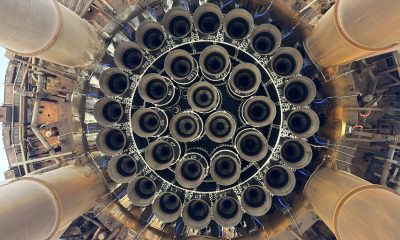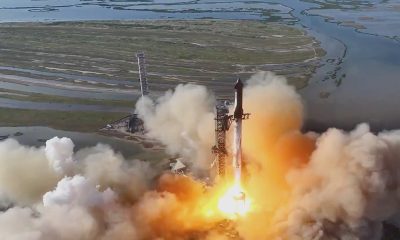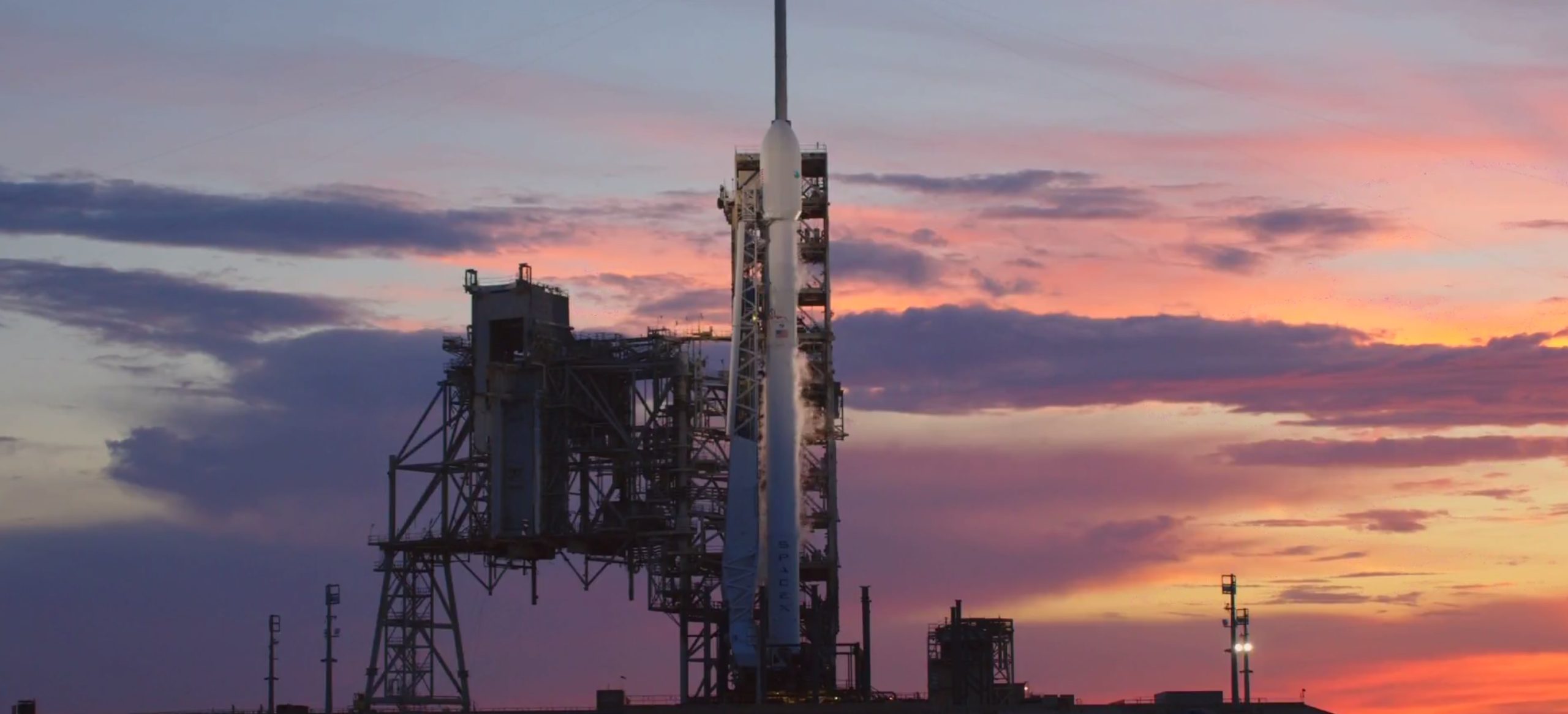
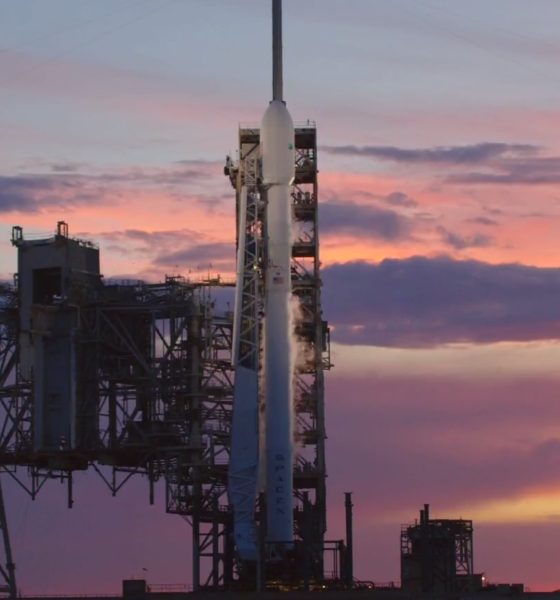
SpaceX
SpaceX prepares for last launch until August: Caution over cadence
After a second automatic T-10s launch abort Monday night, Elon Musk expressed a welcome prioritization of caution over an attempt to break cadence records. As such, the launch team at LC-39A are standing down an attempt today and instead conducting a full review of the Falcon 9 vehicle and ground systems, pushing the launch to either July 5th or 6th. As Musk transparently phrased it, there is only one chance to get a rocket launch right.
We're going to spend the 4th doing a full review of rocket & pad systems. Launch no earlier than 5th/6th. Only one chance to get it right …
— Elon Musk (@elonmusk) July 4, 2017
Following a truly unprecedented series of launches for the company, there was understandably a bit of annoyance from fans watching the coverage for a second time, as well as from journalists seeking to cover the launch. I think a tweet from former NASA Space Shuttle Program Manager Wayne Hale summed up the proper response most coherently, however, stating that “it’s tough to remain vigilant and do the right thing, extremely tough after a couple of launch scrubs and [with] range closure looming”. Remaining vigilant is precisely what SpaceX is doing by calling off another attempt on July 4th and choosing to instead carefully examine the systems involved to ensure that there is no real issue with pad or vehicle hardware.
For launch companies, there are an untold number of external and internal pressures urging executives to attempt launches, be those financial, political, or something as simple as employees wanting to get home for a holiday. However, past failures of launch vehicles, particularly the Space Shuttle, have demonstrated that constant vigilance is a necessity when dealing with rocketry. Wayne Hale was flight director for forty Shuttle launches. In fact, he became Program Manager the day of the Columbia disaster, which occurred at the beginning of February in 2003.
In this context, his statement is almost certainly intended as positive – albeit solemn – encouragement for the choice to take a more cautious route before attempting another launch. SpaceX itself has experienced two widely publicized failures of the Falcon 9, with the most recent of those having occurred less than ten months ago. After China suffered a complex failure during the second launch of their Long March 5 heavy lift vehicle last Sunday, Musk offered sympathy for those involved. Any failure in the launch industry often acts as a wake-up call for other companies and agencies involved, and undoubtedly becomes a reminder that one cannot become too comfortable or allow launch processes or vehicle manufacturing to become too routine when the stakes are as high as they can be.
Sorry to hear about China launch failure today. I know how painful that is to the people who designed & built it. https://t.co/iOkj6egF3O
— Elon Musk (@elonmusk) July 2, 2017
It goes without saying that SpaceX is sharply aware of the need to ensure reliability and safety as they march ever closer to the debut flight of Crew Dragon and its first crewed launches, likely to occur in early 2018. If the stakes for launching the payloads of commercial customers are already high, the price of failures that could lead to loss of life are unspeakable and ought to humble those fans and bystanders who may be losing patience while waiting for a third (admittedly enthralling) launch. Those eager to watch SpaceX’s live coverage must seek to remember that the launches we love to watch occur because paying customers have placed trust in SpaceX to deliver their payloads to orbit, be those payloads massive geostationary communications satellites or astronauts and cargo headed to the ISS. Rightfully so, the customer will always come first, and routine live coverage of rocket launches must always be treated as the luxury it is for the indefinite future.
SpaceX has successfully recovery and reused both Falcon 9 and Cargo Dragon in the last several weeks, and has also recovered three first stages from the three related launches that occurred in that same time period. (SpaceX)
Admittedly, a cornerstone of SpaceX’s mission as a company is making access to orbit reliable, affordable, and routine, but there will always be risk in rocket launches, just as there will always be risk when one boards a plane, drives a car, or simply walks down the sidewalk along a busy street. Minimizing and reducing the risk present in spaceflight will take a considerable amount of time and effort, and doing what is necessary to prevent failures from negatively impacting the customers that make SpaceX viable as a company is both a rational and ethical strategy.
Returning to current events, the Falcon 9 intended to launch Intelsat 35e went horizontal on July 4, and is likely now in the integration facility present at LC-39A, providing easier access to engineers as they comb over the vehicle to ensure its health. After an absolutely picturesque launch attempt Monday evening, weather is looking even better for a potential launch attempt on either Wednesday or Thursday evening.
If the vehicle and pad cooperate, Intelsat 35e will be a facing send off for the Eastern Range before it shuts down for the remainder of July to undergo routine maintenance. SpaceX currently does not have Vandenberg (West coast) missions scheduled until August, so July will likely see no launches from the company. There is still plenty to be done in lieu of launching customer payloads, however. LC-40, the pad damaged in the Amos-6 static fire incident last September, is currently preparing to be reactivated, with a recent interview of Gwynne Shotwell pointing to its initial availability sometime in August. Once it is reactivated, all single core Falcon launches will be transferred to LC-40, and LC-39A will begin undergoing structural modifications to accommodate both crewed missions in 2018 and Falcon Heavy, which could debut as early as Q4 of 2017.
- Intelsat 35e, July 2nd. (SpaceX)
- A render of Falcon 9 and Crew Dragon at LC-39A. (SpaceX)
The two most visible changes that will occur at LC-39A will be the installation of additional hold-down clamps and modifications to the Transporter Erector, as well as a Crew Access Arm, which will be attached to the large, vertical structure seen directly right of Falcon 9. Of note, it is very likely that at least two, if not all three of the first Falcon Heavy’s cores are already present at the Cape. After years of being deemed a paper rocket, Falcon Heavy is indeed very real and very close to being able to conduct its first launches.
A month of no launches from SpaceX will undoubtedly be less than thrilling, but the Air Force and Kennedy Space Center employees will get a much-deserved break from a busy launch manifest ahead of what will likely be an even busier final four months of the year. There is a lot to look forward to.
News
Starlink makes a difference in Philippine province ravaged by typhoon
The Severe Tropical Storm battered the province, leaving communications networks in the area in shambles.
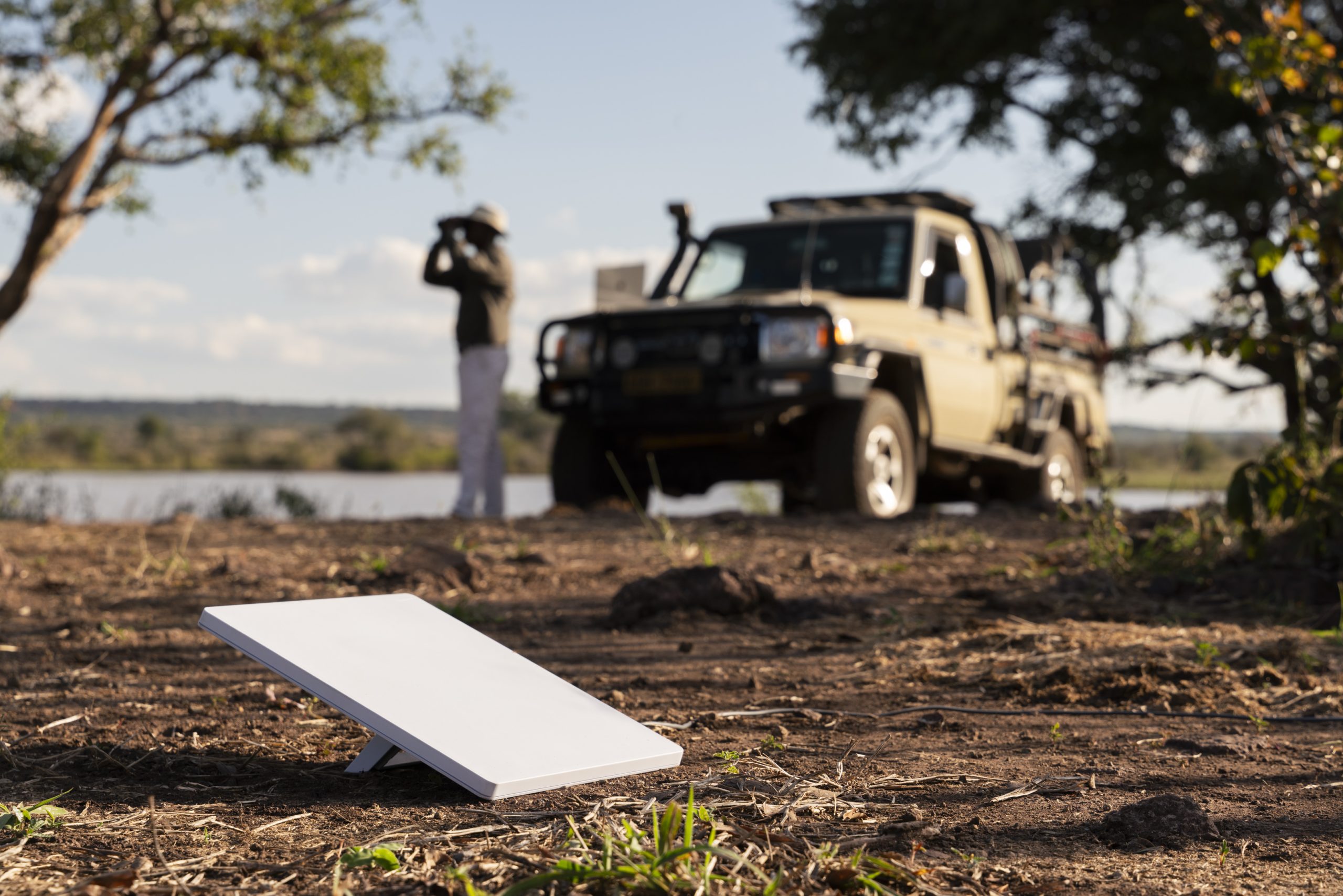
The Philippines’ Department of Information and Communications Technology (DICT) is using Starlink to provide connectivity in the municipality of Masbate, which was affected by Severe Tropical Storm Opong (international name Bualoi).
The Severe Tropical Storm battered the province, leaving communications networks in the area in shambles.
Starlink units enhance connectivity
DICT Secretary Henry Aguda visited the province to assess internet and communications infrastructure and deliver 10 additional Starlink satellite units, according to the Philippine News Agency. The is move aimed at strengthening emergency response and restore digital access to the area.
Aguda met with Masbate Governor Richard Kho during his visit and joined telecommunications representatives in inspecting provincial offices, free charging stations, and Wi-Fi connectivity sites for residents.
According to DICT officer-in-charge Rachel Ann Grabador, three Starlink units, 10 routers, and a 2kW solar-powered station have already been deployed in the province following the typhoon. The units have been installed at key facilities such as Masbate Airport’s communications tower and the Masbate Provincial Hospital’s administrative office.
Game-changing technology
Thanks to its global coverage and its capability to provide high-speed internet connectivity even in remote areas, Starlink has become the best communications solution that can be deployed in the aftermath of natural disasters. Its low-cost kits, which are capable of of providing fast internet speeds, are also portable, making them easy to deploy in areas that are damaged by natural disasters.
As noted in a Space.com report, there are currently 8,475 Starlink satellites in orbit, of which 8,460 are working, as of September 25, 2025. Initially, SpaceX had filed documents with International regulators to place about 4,000 Starlink satellites in Low Earth Orbit. Over time, however, the number of planned Starlink satellites has grown, with SpaceX aiming to launch as many as 42,000 Starlink satellites to fully connect the globe.
Elon Musk
SpaceX shares targets and tentative launch date for Starship Flight 11
As with all SpaceX tests, the estimated timeline for Starship Flight 11 remains subject to change based on conditions and readiness.
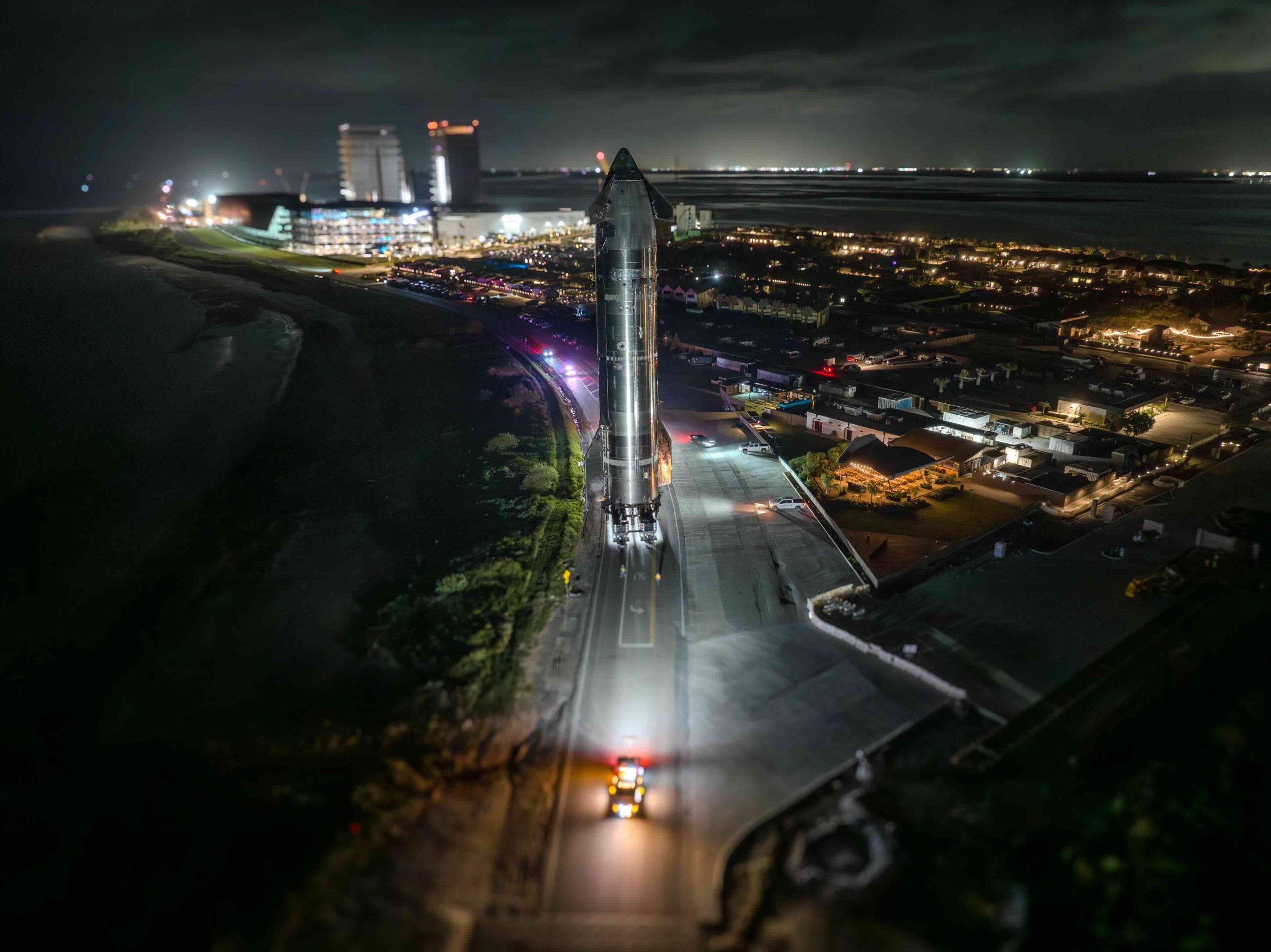
SpaceX is targeting Monday, October 13, for the eleventh test flight of its Starship launch system. The launch window is expected to open at 6:15 p.m. CT.
Similar to past Starship missions, a live webcast will begin about 30 minutes before launch on SpaceX’s website, X account, and X TV app. As with all SpaceX tests, the estimated timeline for Starship Flight 11 remains subject to change based on conditions and readiness.
Super Heavy booster landing test
The upcoming mission will build on the data gathered from Starship’s tenth test flight, focusing on booster performance and upper-stage capabilities. The Super Heavy booster, previously flown on Flight 8, will launch with 24 flight-proven Raptor engines, according to SpaceX in a blog post on its official website. Its primary objective is to validate a new landing burn engine configuration designed for the next generation of Super Heavy.
Instead of returning to Starbase, the Super Heavy booster will follow a trajectory toward the Gulf of America. During descent, it will ignite 13 engines before transitioning to a five-engine divert phase and then completing the landing burn with three central engines, entering a full hover while still above the ocean surface, followed by shutdown and dropping into the Gulf of America.
Starship upper-stage experiments
The Starship upper stage for Flight 11 will carry out a series of in-space demonstrations, including the deployment of eight Starlink simulators that are comparable in size to next-generation Starlink satellites. These payloads will reenter and burn up during descent. A planned Raptor engine relight in orbit will also provide valuable test data.
To evaluate the upper stage’s resilience during reentry, SpaceX engineers have intentionally removed heat shield tiles from select areas to stress-test Starship’s thermal protection system. The vehicle will attempt new maneuvers during descent, including a banking profile and subsonic guidance algorithms intended to simulate future return-to-launch-site missions. The upper stage will ultimately target a splashdown in the Indian Ocean.
SpaceX has already posted a link to the livestream for Starship Flight 11:
News
Astra CEO shades SpaceX over employee workload and Starbase
Elon Musk once stated that no one ever changed the world working just 40 hours a week.
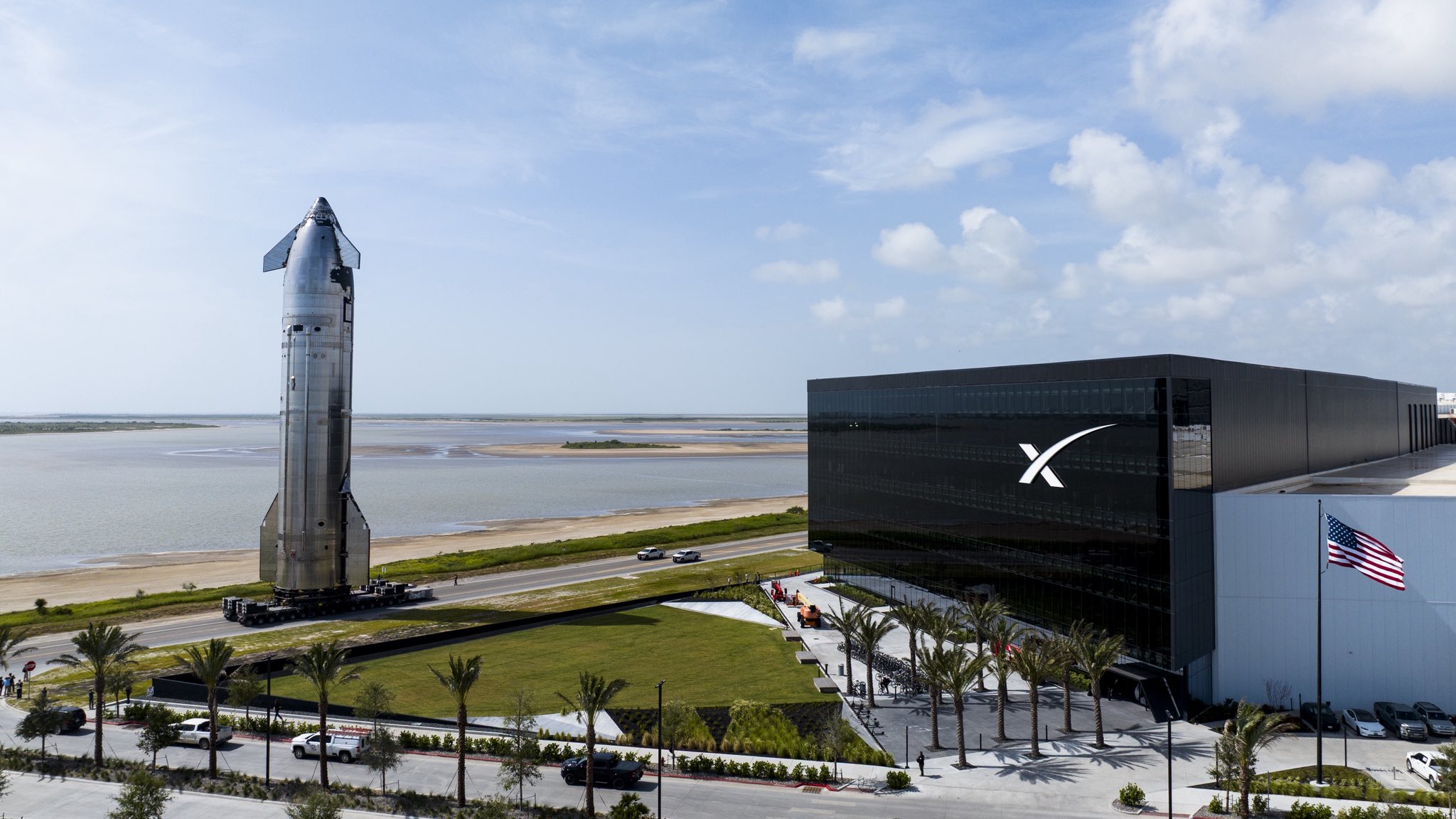
Elon Musk once stated that no one ever changed the world working just 40 hours a week. This was something that is openly known among his companies. They have the potential to change the world, but they require a lot of hours.
SpaceX’s working environment was recently criticized by Chris Kemp, the chief executive officer of Astra. During some remarks at the Berkeley Space Symposium 2025 earlier this month, Kemp shared some sharp remarks about the Elon Musk-led private space enterprise.
SpaceX working conditions and Starbase
As noted in a report from Ars Technica, Kemp discussed a variety of topics during his talk. These included Astra’s successes and failures, as well as his thoughts on other players in the spaceflight industry. To be fair to Kemp, he practically shaded every major rival, calling Firefly’s engine “garbage,” dubbing Blue Origin as slow, and stating that Rocket Lab’s Electron rocket is “too small.”
SpaceX also received some colorful words from the Astra CEO. According to Kemp, SpaceX is leading the way in the spaceflight industry and Elon Musk is admirable in the way that he is willing to fail in order to move quickly. He did, however, highlight that Astra offers a significantly better working environment than SpaceX.
“It’s more fun than SpaceX, because we’re not on the border of Mexico where they’ll chop your head off if you accidentally take a left turn. And you don’t have to live in a trailer. And we don’t make you work six and a half days a week, 12 hours a day. It’s appreciated if you do, but not required,” Kemp said.
Elon Musk’s demands
It is known that Elon Musk demands quite a lot from his employees. However, it is also known that Musk-led companies move very fast and, in more ways than one, they have accomplished world-changing feats. Tesla, for example, has practically ushered in the era of the modern electric vehicle, and SpaceX has made space attainable through its reusable rockets. With this in mind, employees at Musk’s companies, and this of course includes SpaceX, are likely proud of their long work hours.
No one could probably go to Mars in this lifetime with a team that really works just 40 hours a week, after all.
-
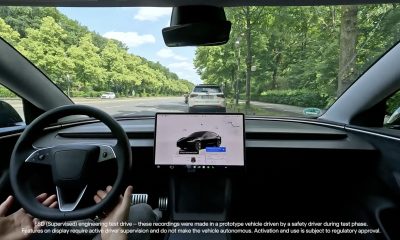
 Elon Musk2 weeks ago
Elon Musk2 weeks agoTesla FSD V14 set for early wide release next week: Elon Musk
-
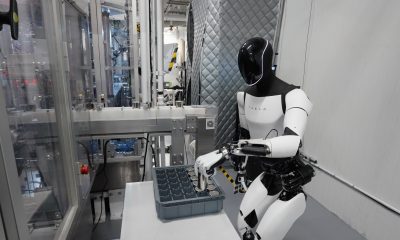
 News2 weeks ago
News2 weeks agoElon Musk gives update on Tesla Optimus progress
-
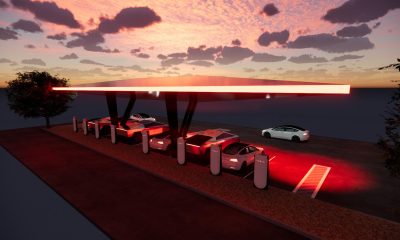
 News2 weeks ago
News2 weeks agoTesla has a new first with its Supercharger network
-
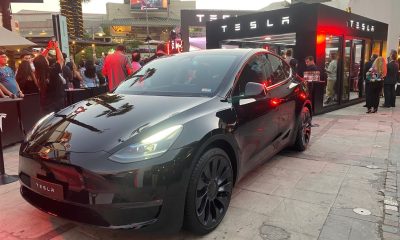
 News2 weeks ago
News2 weeks agoTesla job postings seem to show next surprise market entry
-
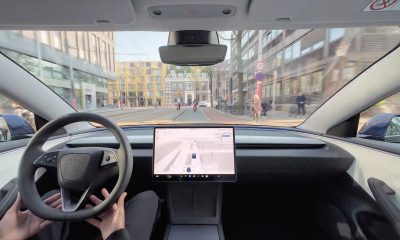
 Investor's Corner2 weeks ago
Investor's Corner2 weeks agoTesla gets new Street-high price target with high hopes for autonomy domination
-
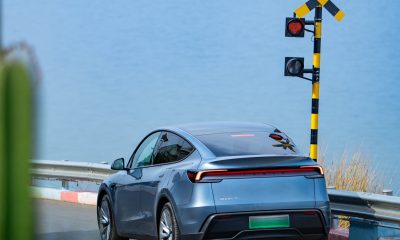
 Lifestyle1 week ago
Lifestyle1 week ago500-mile test proves why Tesla Model Y still humiliates rivals in Europe
-
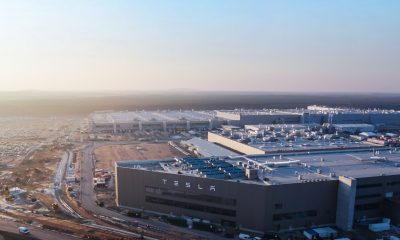
 News1 week ago
News1 week agoTesla Giga Berlin’s water consumption has achieved the unthinkable
-
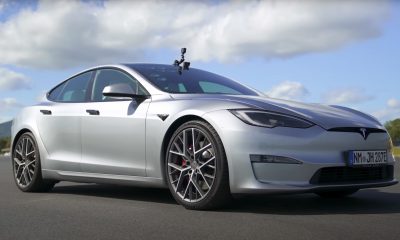
 Lifestyle1 week ago
Lifestyle1 week agoTesla Model S Plaid battles China’s 1500 hp monster Nurburgring monster, with surprising results

